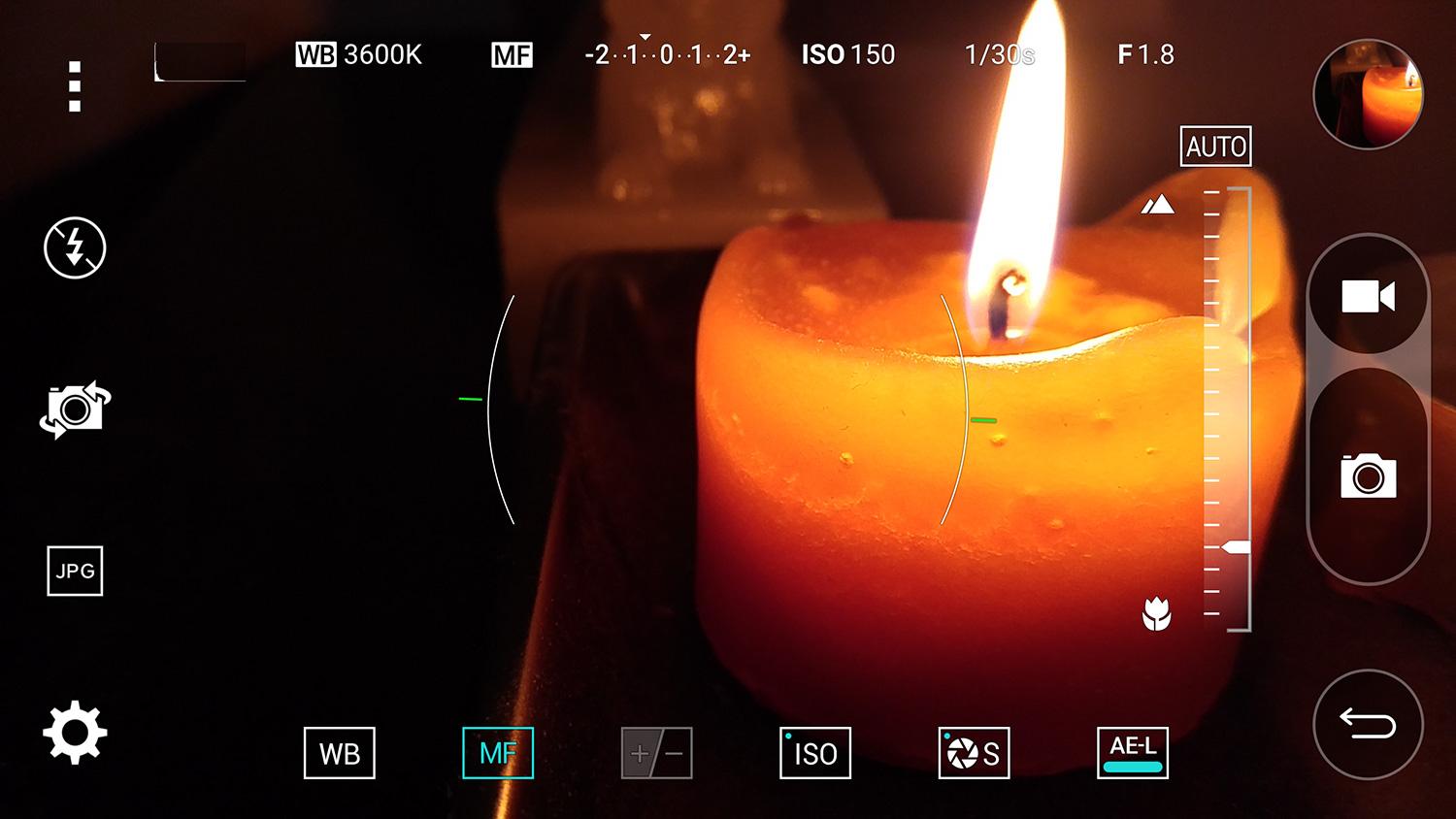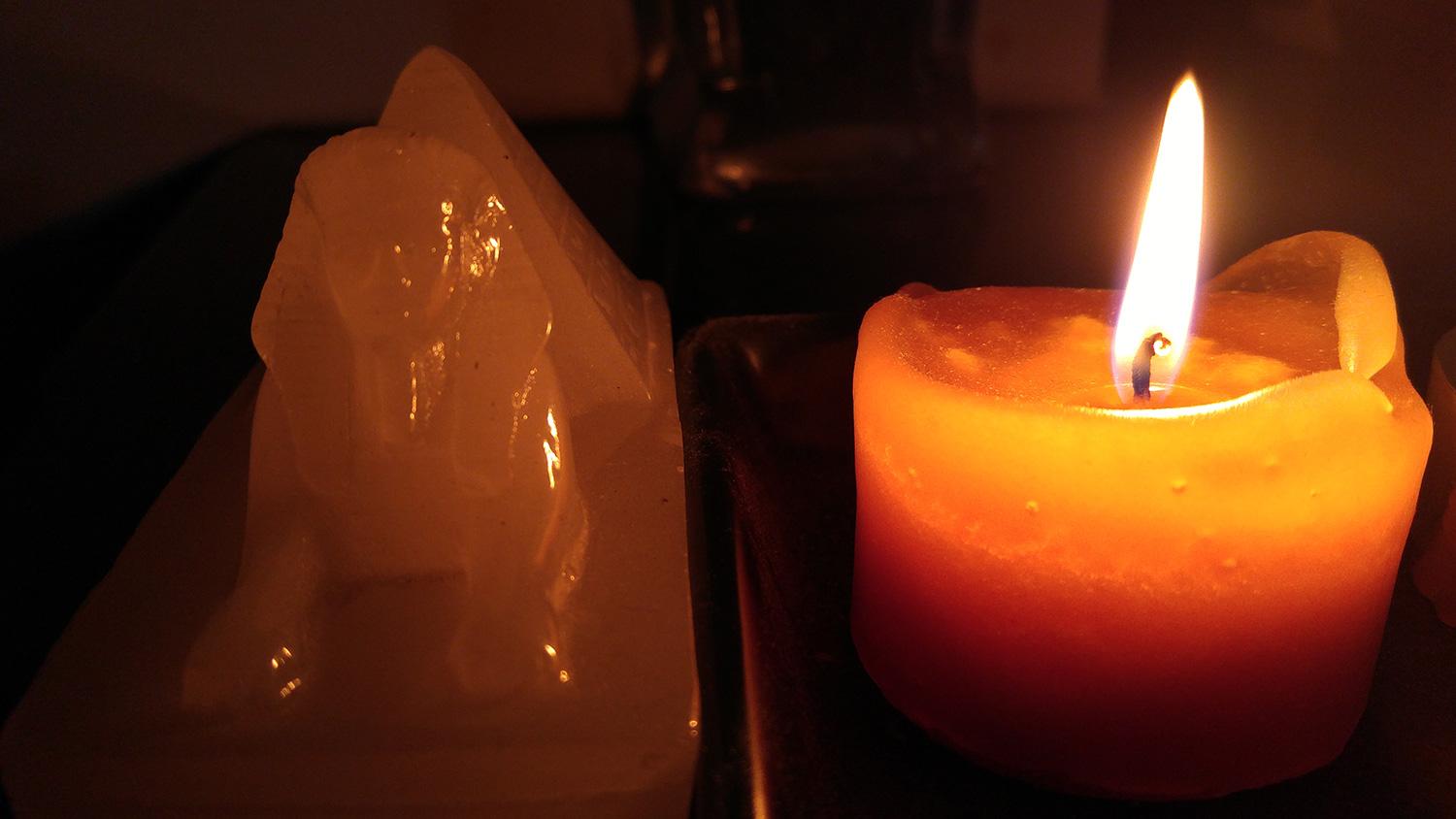“The LG G4 is the best smartphone of 2015, and it’s camera is so good that it often outperforms the iPhone 6 Plus.”
- Bright screen with gorgeous contrast
- Excellent camera performance
- Shooting in RAW and Manual mode
- Removable battery and MicroSD card slot
- Leather battery cover rocks
- Still made of plastic
- UX features are a mixed bag
- Battery life is average
- Speaker quality is weak
“Life’s Good” is LG’s tagline, but life has been tough for the company’s mobile division. Its archrival Samsung has captured a big chunk of the phone market, and LG has spent several years chipping away at Samsung’s mighty presence.
The Nexus 5 and G3 proved that LG could play with the big boys, and the G4 expands on that notion, improving features that optimize the user experience in tangible ways. With an impressive camera and more user-friendly software, the G4 makes a strong case for being the dark horse smartphone that could make waves and surprise many in 2015.
Do the right thing, choose the leather model
To own an
It’s not annoying either. There are never any fingerprints to clean off, it doesn’t cling to the inside of your jeans pocket, and is apparently very hard wearing. For the past few weeks, the G4 has gone case-less in my pocket and bag, and the leather (and screen, actually) have suffered no ill-effects. The leather will undoubtedly bed in with age, but there’s no evidence of that just yet, and it hasn’t lost its sheen.
LG has got the colors right too. The brown leather complements the matt-silver rear controls beautifully, and the phone goes very well with the darker brown leather used for the strap on the gold Watch Urbane. Using the two together looks great, and is one of the first times I’ve ever matched two pieces of tech with each other based on color and material choice.
Showstopping camera
To give the G4 a thorough workout, it recently accompanied me on a long weekend away, where its photographic ability, battery, and general use could be explored in a variety of situations. There’s little to say about how it handles email, web surfing, and calls — because it does them effortlessly. The Snapdragon 808 processor is more than capable enough to keep up, although under heavy usage — I’ve used it for VR in a headset, for example — it can still make the device pretty toasty, but never to the point where it’s uncomfortable or a danger.
The camera is stunning, and did everything I could have wanted. There is absolutely no reason to carry another camera, or even choose a different phone, if photos are your priority. Day or night, inside or out, and in challenging environments it performed flawlessly. There were moments I wanted to capture during my weekend, and I’m pleased the G4 was my camera of choice to do so.
A small concert venue with bright stage lights looking out onto a dark auditorium isn’t the ideal place to take good pictures. Even without switching to manual mode, the G4’s auto settings and the laser autofocus made cool shots possible. Several are shared here, and come straight off the phone. With a little editing, each looks superb.
It’s the same with pictures taken around the city at night, and of sunsets. These were the times where it was possible to play with manual mode, which is hampered only by the fixed f/1.8 aperture — how great would it be to adjust this number? Using the G4 to shoot video did reveal the spot autofocus can be overzealous if left unattended, and results improved when the setting was turned off.
Ignore the slightly uninteresting design
The battery performance has remained steady at a little over a day, but the VR video really did suck the power, and could easily eat 20 to 30 percent in 20 minutes. I’ve also become used to using LG’s Smart Bulletin board, which slides in from the left of the main home screen and shows calendar entries, LG Health, and a music widget. It’s not revolutionary, but it’s attractively presented and easy to access.
If there’s a problem with the G4, it’s that it doesn’t visually standout, despite the leather back and slight curve to the body. It’s very similar to the G3, and can’t quite match the Samsung Galaxy S6 in terms of cool design. Ignore this, choose a leather clad version, and revel in owning a fantastic flagship
Original review continues below:
Curvy, not flexy
LG likes curves. Every phone it launches seems to stick to that design philosophy, and the G4 essentially maintains its predecessor’s overall look. The contoured back is the same angle, and while slightly taller and wider, the G4 doesn’t deviate from the angular top and bottom. The corners are less rounded and the edges slope outward just enough to give it a slightly inverted look upon closer inspection.
Unlike Samsung, LG hasn’t abandoned plastic, nor a removable back. The back is made of a metal and plastic compound mixture, except it’s clear this cocktail is skewed toward the latter. A patterned design is etched into the metallic and ceramic backs to add some flair. Since gold is in vogue these days, LG got into the act and dipped into that as well, along with white and dark gray versions.
The removable back does serve more than a functional purpose for what lies underneath (battery, SIM, and MicroSD), since it’s also used as a way to personalize and augment the phone’s appearance. The full grain leather battery covers are a stylish turn for LG — in a good way. At its launch event in New York, LG noted that it used the same vegetable tanning process for its leather that luxury brands like Louis Vuitton and Coach are known to use. Using full grain, rather than genuine leather, also makes the G4 is more durable, so fading and age give it character. Brown, black, beige, and sky blue versions are already confirmed, along with the yellow and crimson red versions shown in New York.
Having all these back cover options means they can be swapped, so it would be no problem to buy a white G4 and tack on a blue leather battery cover later. My review unit didn’t include one, but after some hands-on time with a few of them in New York, I was impressed. The leather is smooth and silky soft. Every detail of the leather backing, right down to the stitching, is well executed. I would likely switch to the black one when given the chance, personally.
On the front is a 5.5-inch quad HD IPS Quantum Display with the same resolution of 2,560 × 1,440 pixels and pixel density of 538ppi as last year. LG gave the front a slight curve it calls Slim Arc, which is noticeable when looking at the G4 directly from its side. The slight curve makes the phone more comfortable to hold in your hand. The screen is also brighter, both by default and at full brightness, a necessary design tweak to rectify the duller output of the G3. LG says it also has 20 percent greater color reproduction and 50 percent better contrast. In our comparisons to the Galaxy S6 and
Under the hood
Playing it safe, LG opted not to go with Qualcomm’s Snapdragon 810 processor, which has been dogged by concerns over excessive heating. Instead, it’s the Snapdragon 808 chip that’s inside — which is still a powerful hexa-core processor, though LG hasn’t really explained why it made the change other than to say the chipset is “optimized” for the G4’s features.
There’s no doubt the G4 is the best handset LG has made to date.
There is 3GB of RAM and 32GB of internal storage to help the cause, along with a 16-megapixel rear camera with improved optical image stabilization (OIS) and a color spectrum sensor – more on that later. Interestingly, LG chose to go with a Micro SIM card slot, rather than use the Nano SIM the iPhone and other Android phone manufacturers are starting to embrace. There is also a MicroSD slot (not present on competing phones) that is technically capable of supporting up to 2TB cards.
I don’t know if the Snapdragon 810 processor would’ve made a notable difference in the G4’s performance, but I had little to complain about with the 808. The phone is brisk, speedy, and dependable. I had no problem doing anything I would normally do on a
Compared to the Samsung Galaxy S6, which uses an octa-core processor, I didn’t notice a drop in overall performance. Both were equally fluid in the same respects, so LG may, in fact, be on the right track in suggesting users wouldn’t notice anything unusual. It’s also easier to compare the two because neither relies on gimmicky features, like they did in the past. Hardline
If I did have something to point a finger at, it would be the speaker, found on the rear. It’s easily among the weakest links of the phone’s design, and while the G4’s curved back helps the sound escape when laid flat, fidelity is not in the same league as the HTC One M9.
Software
The DT Accessory Pack
Up your game and the get the most out of your gear with the following extras, hand-picked by our editors:
Creative Sound Blaster Roar: Portable Speaker ($130)
SanDisk – Ultra 128GB microSDXC ($90)
LG has taken a restrained approach to its software this year, like Samsung. Running on Google’s
Smart Notice is supposed to be more personalized and contextual, offering more than simple weather and traffic updates. By learning my habits, it would ostensibly know that I don’t have to commute to work (I work from home), and prioritize weather and phone usage alerts instead. Perhaps it needed more time to get to know me, because I found it to be too predictable every day, regardless of where I was or what I was doing.
The Quick Help widget is found as a question mark next to Smart Notice. It’s designed to be a mini search engine for the G4 itself, but for whatever reason, none of the queries I tried yielded results. Simple things like “calendar” and “color spectrum” drew blanks.
The true value in LG’s software experience is the bare minimum of alterations it offers. Icons and menus clearly received the Lollipop treatment with flatter designs and vibrant colors. The Settings menus are clear, concise, and easy to navigate. There’s a level of simplicity here that’s easy to appreciate, even if it’s not always patently obvious. I liked the general look and feel of the software more than any features LG added because its apps and features didn’t impact on my daily usage like they were intended to, and tended to only work with other LG apps. Not everyone wants to use LG Health or LG’s Music app. Some of us use Moves and Spotify. In any case, if you ignore some of LG’s apps, much like you’ve ignored some of Samsung or Apple’s apps, you’ll be better off.
This might be the best smartphone camera
The G4’s camera is unquestionably its crowning feature — And it should be, considering that it sports a 16-megapixel sensor, an f/1.8 aperture lens with OIS 2.0 built-in, and a color spectrum sensor. The latter feature is unique to smartphones, and its purpose is to measure the ambient lighting conditions from both the source of the light and where objects are reflected in the scene. This is on top of the sensor’s ability to capture more realistic color tones.
The G4 has one of the best
These features, coupled with the excellent controls in Manual mode, give the G4 one of the best
Low-light shooting is perhaps the best available on any
Here, I could toggle the white balance, ISO, shutter, metering, and choose between auto-exposure lock (AE-L) or manual focus (MF). Adjusting any of the settings shows what the photo would look like in real time. Users who might be intimidated by going manual may find that one factor to be the most inviting. Even someone with years of photography experience like myself very much appreciated seeing that.
The photos the G4 captured were impressive across the board. Being able to shoot in RAW was even better, given how much extra detail the sensor was able to take in.
Video capture in 4K or 1080p is fine. You can’t really tinker with image settings before shooting a clip though. I tried to set up a low-light video clip by toggling the different metrics, but once I tap record, everything went automatic, so it was all for naught.
Battery life
Samsung got some flak for not going with a removable battery, whereas LG may earn praise for sticking with it. That’s subjective, of course, since replacing a battery isn’t something every user feels the need to do. The 3,000mAh battery inside performs well enough, but I wouldn’t consider it to exceptionally good. Basic usage saps little, but once more intensive tasks come into play, the juice starts dripping noticeably.
Not to say that the G4 guzzles battery life because it’s not that bad, it’s only that intensive tasks seem to take more out of the processor than LG lets on. For example, streaming video remotely via Plex chomped on my battery life by a noticeable margin. Even when I initially set up the phone, I lost 20 percent in less than two hours because of everything that had to be downloaded and installed. Overall performance is fine, but for very intense processes, the G4 fares no better than its competitors.
Conclusion
There’s no doubt the G4 is the best handset LG has made to date, not just because of the components, but also because of the thoughtfulness that went into it. Little things, like a brighter screen with better contrast, prettier interface, and useful software tweaks, stood out because I interacted with them every day. For me, the curved back and edges made it easier to pick up the phone off the table, as well, and hold it. The Knock On double tap to wake from sleep has always been a useful feature. Double pressing the volume down button to instantly launch the camera was great for snapping selfies.
I can forgive the plastic design because real leather is an alternative. If not for that, I would dock LG for taking the easy way out. Using real leather in a way that doesn’t cut corners sends the right message, much like the other moves made with the G4. Whether or not consumers will take it to heart and splurge for the G4 is going to be interesting to watch, but we haven’t been this impressed with a
Highs
- Bright screen with gorgeous contrast
- Excellent camera performance
- Shooting in RAW and Manual mode
- Removable battery and MicroSD card slot
- Leather battery cover rocks
Lows
- Still made of plastic
- UX features are a mixed bag
- Battery life is average
- Speaker quality is weak











































